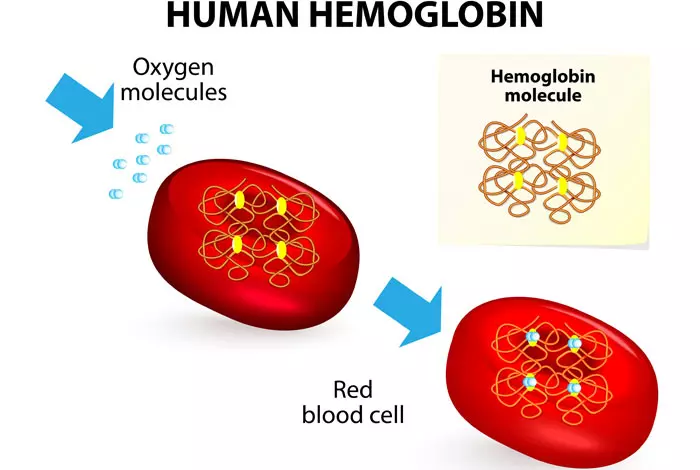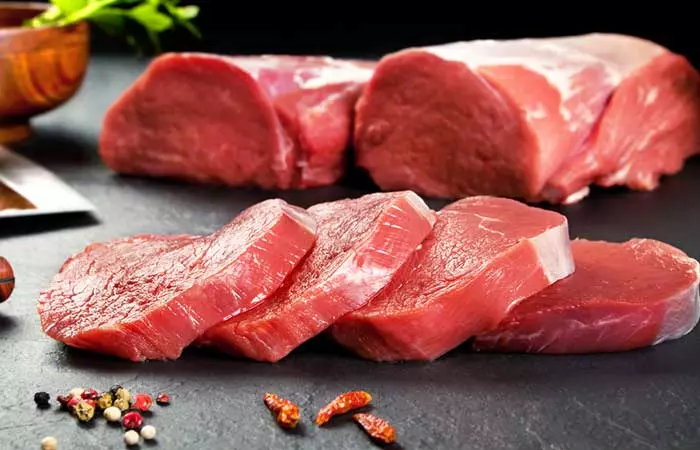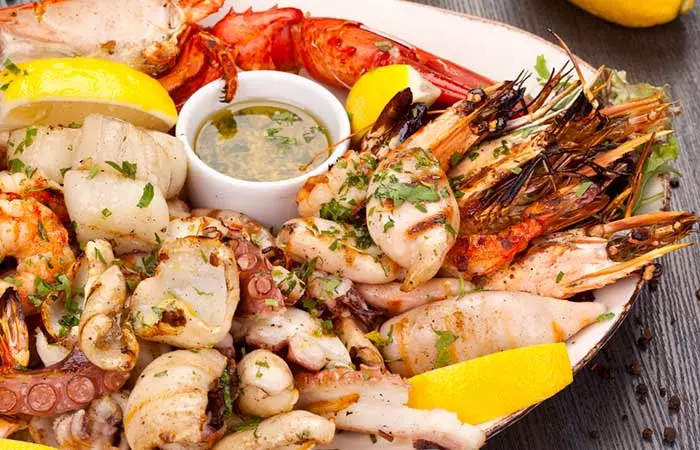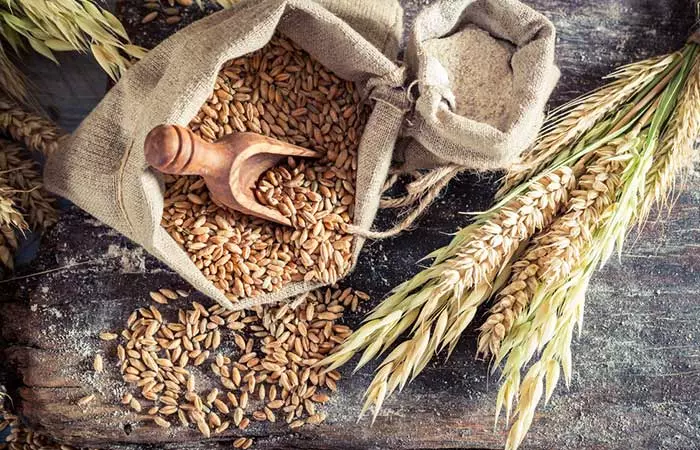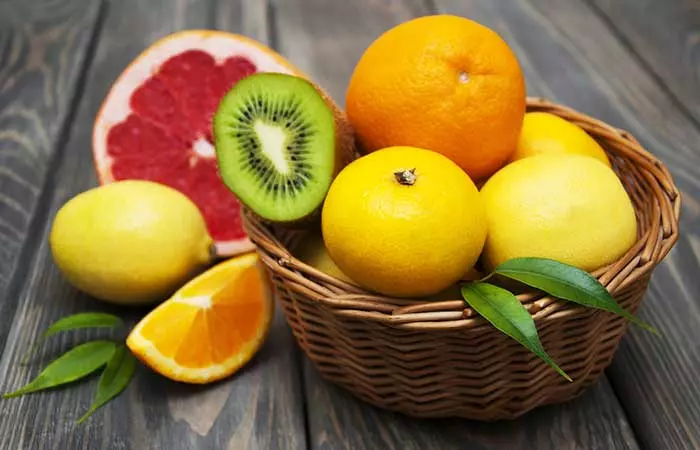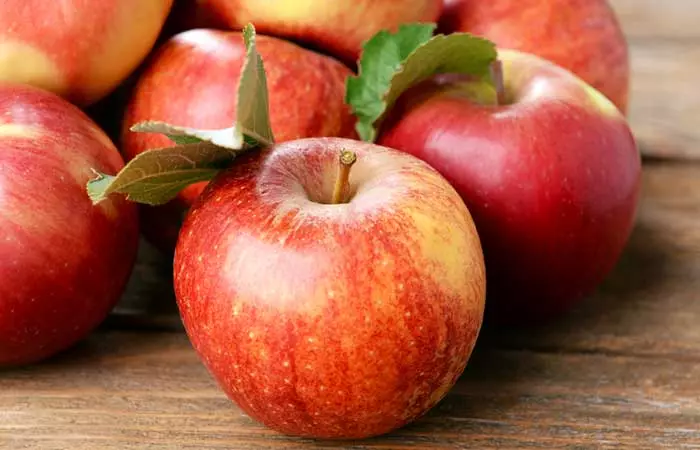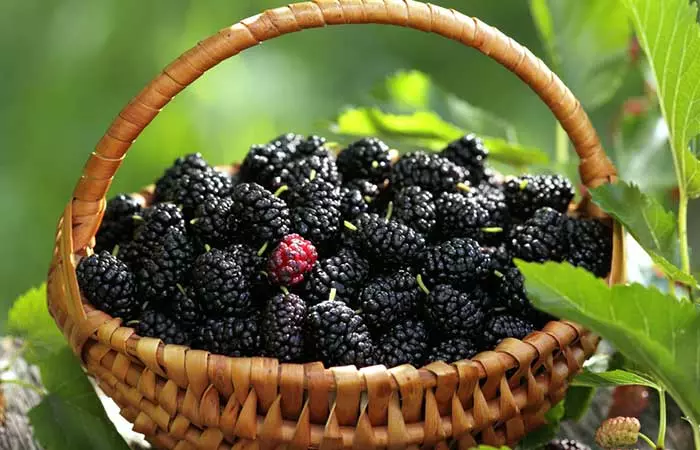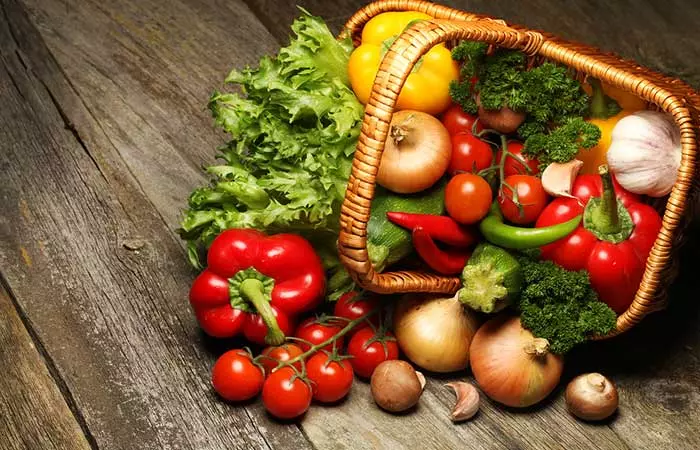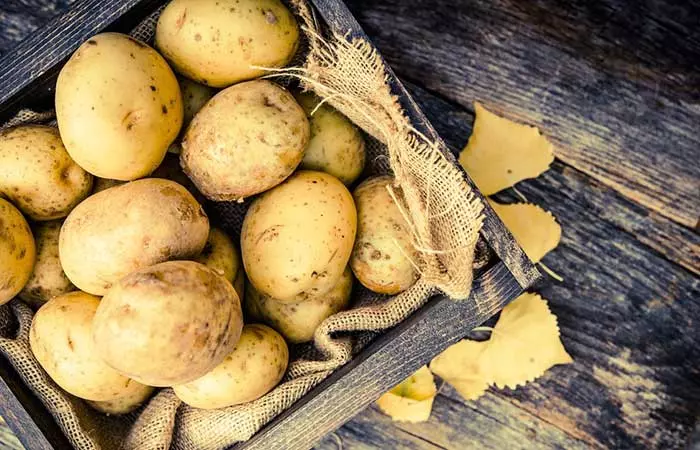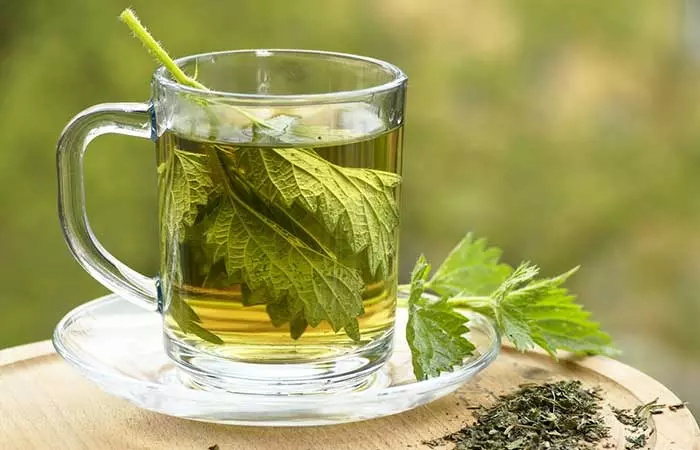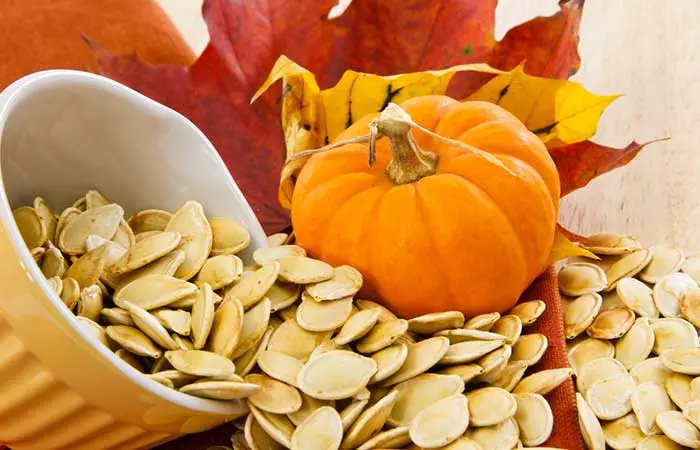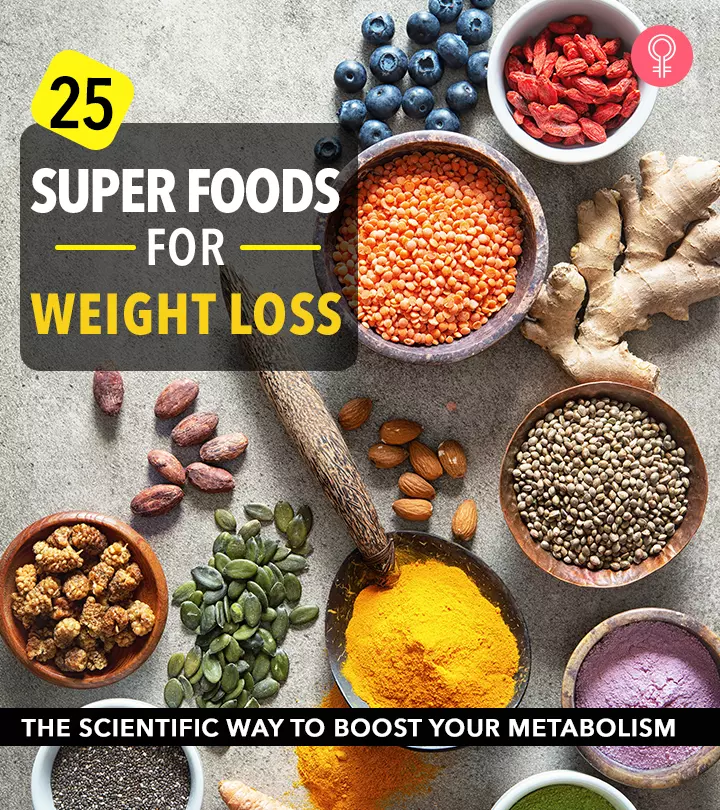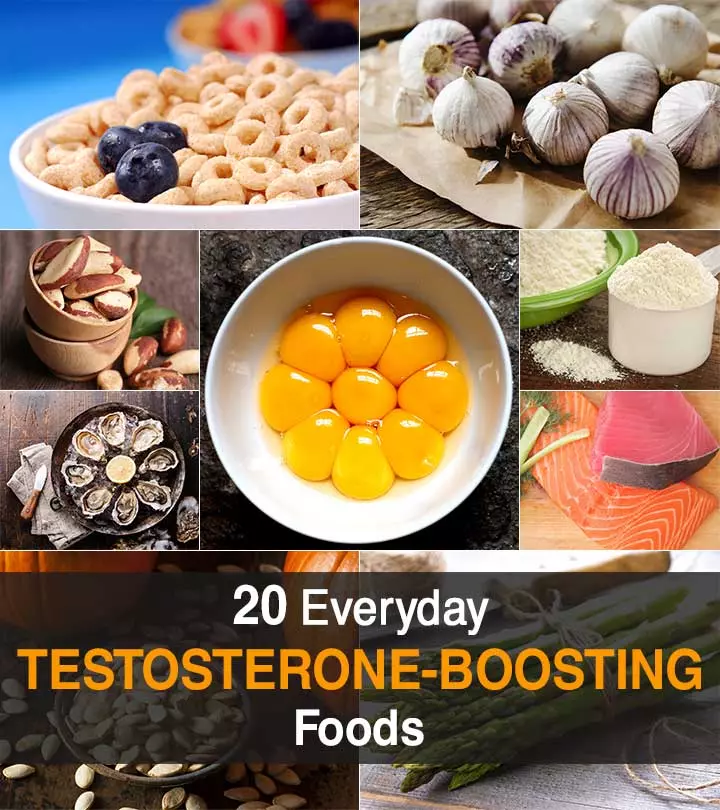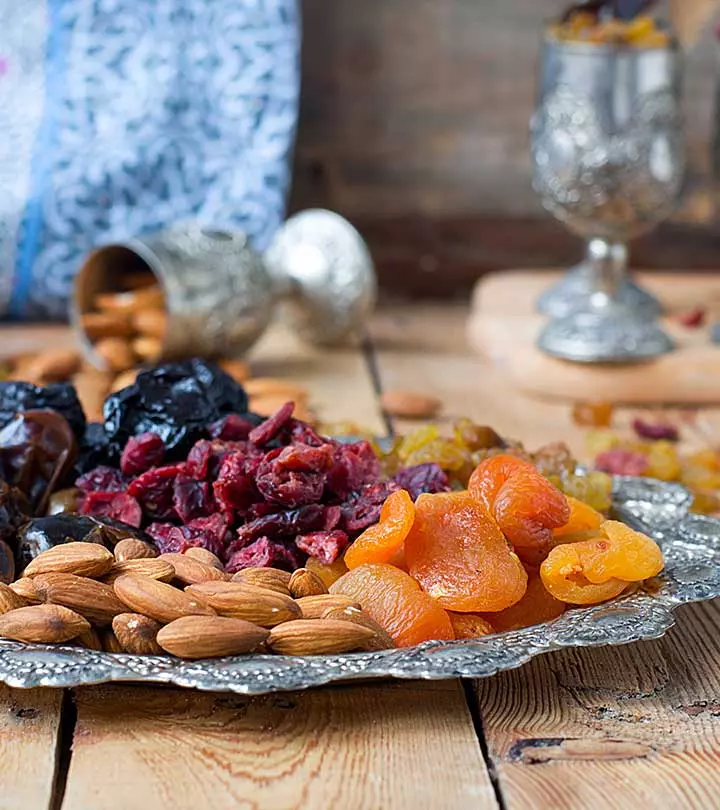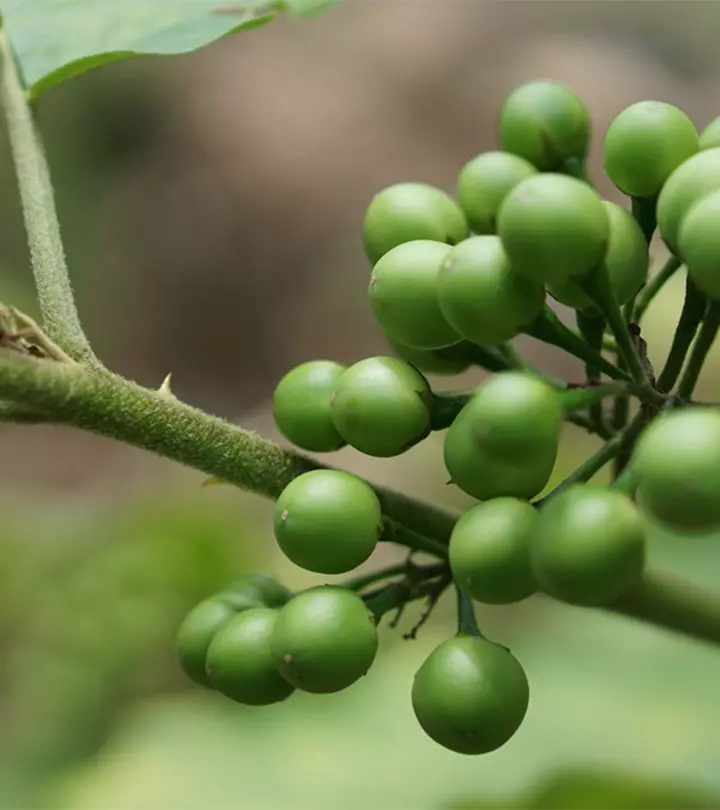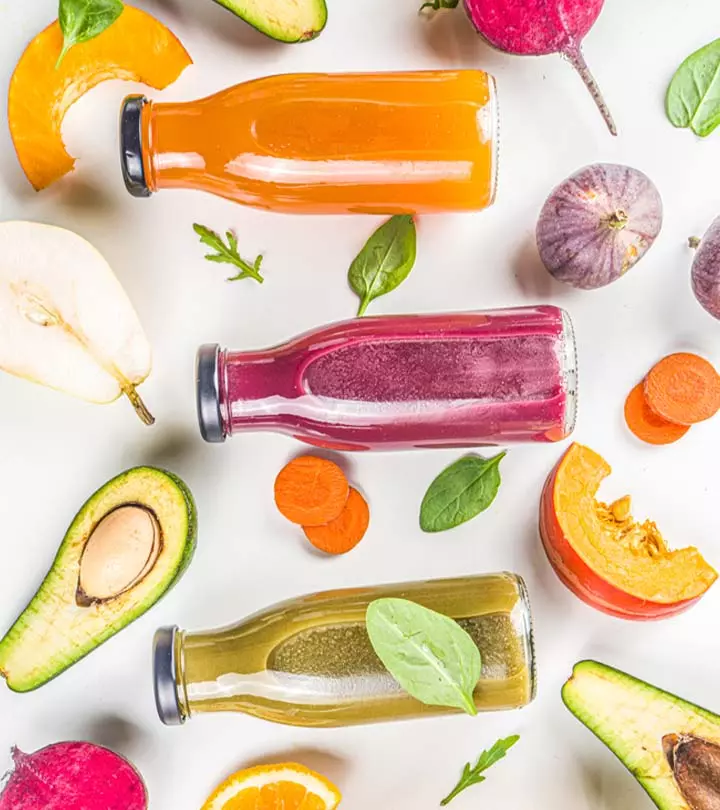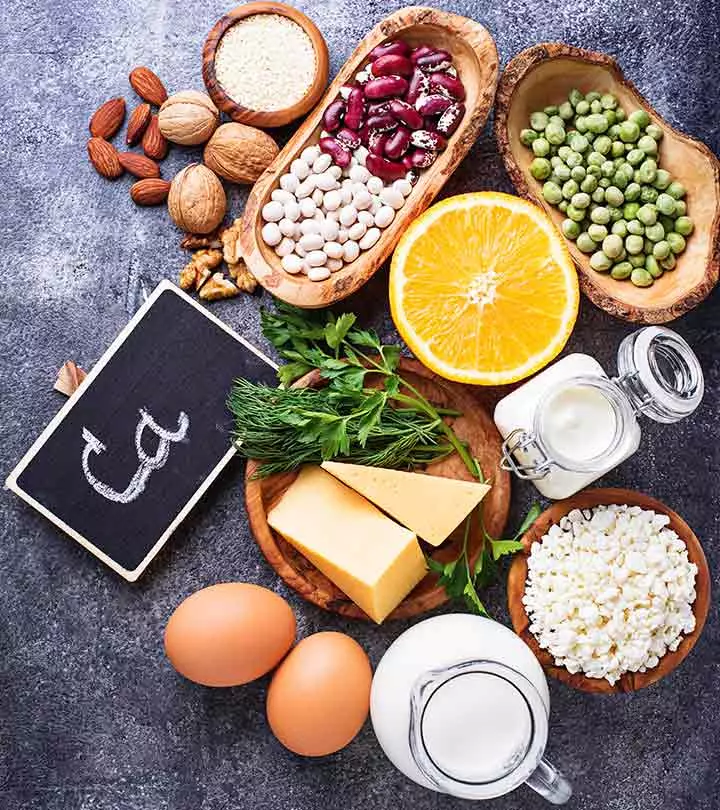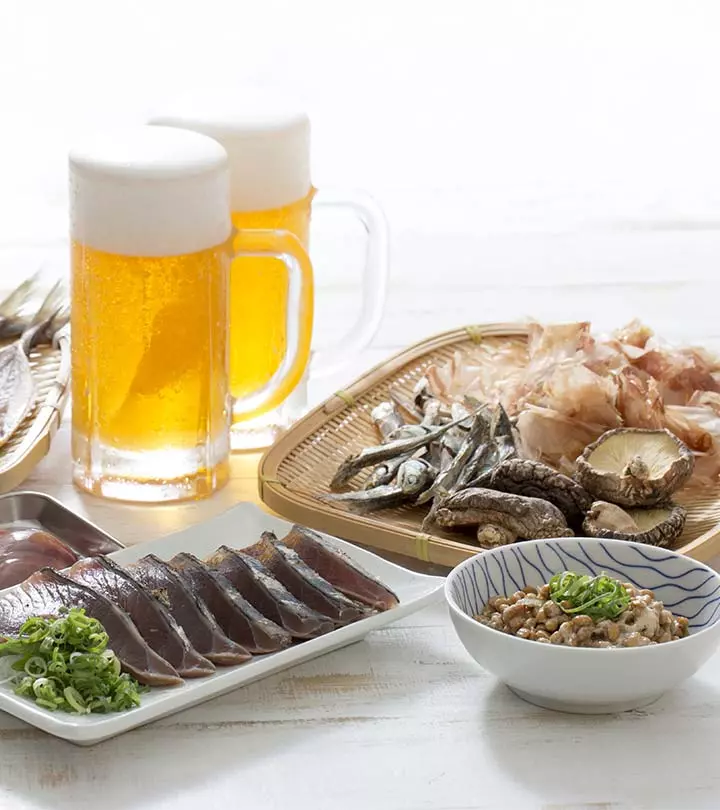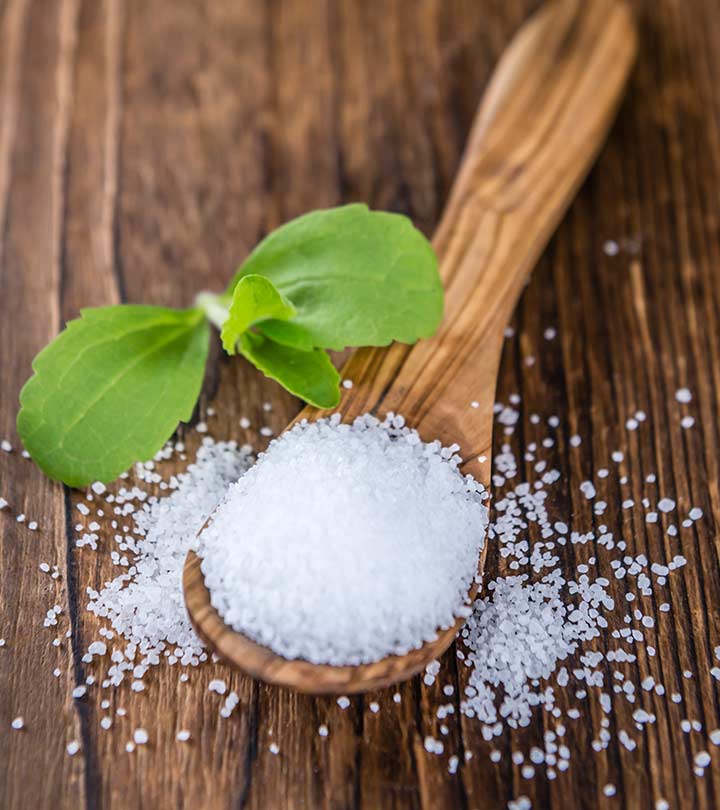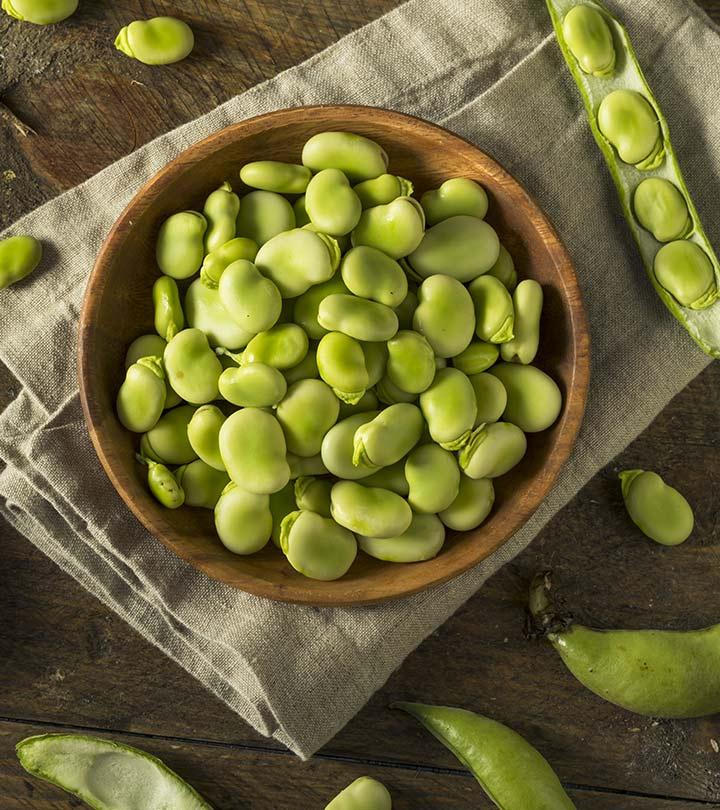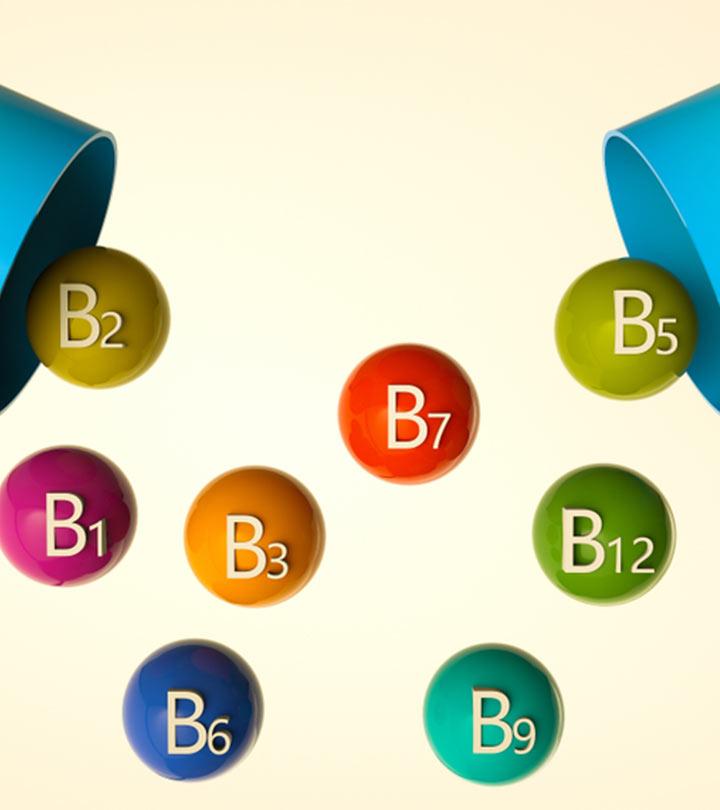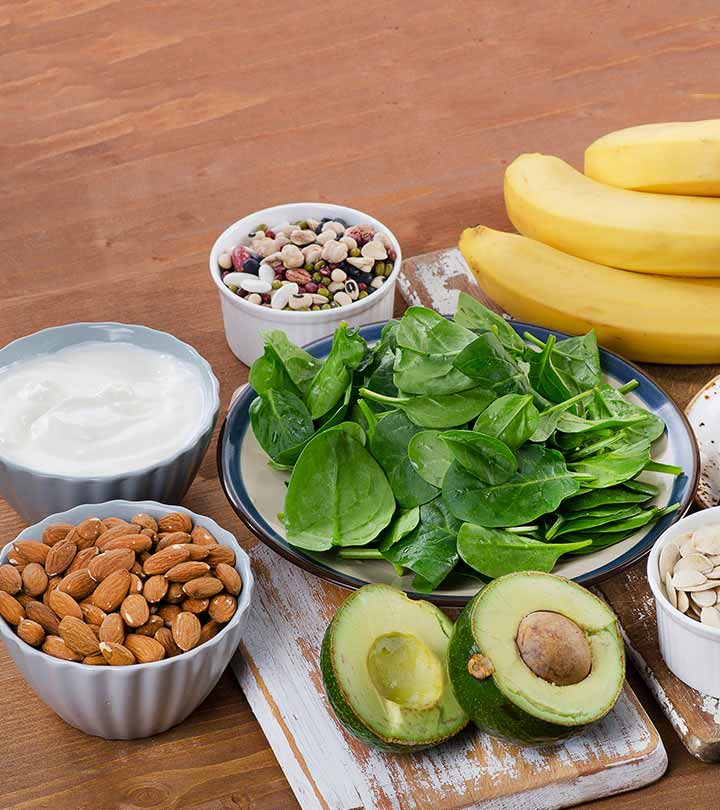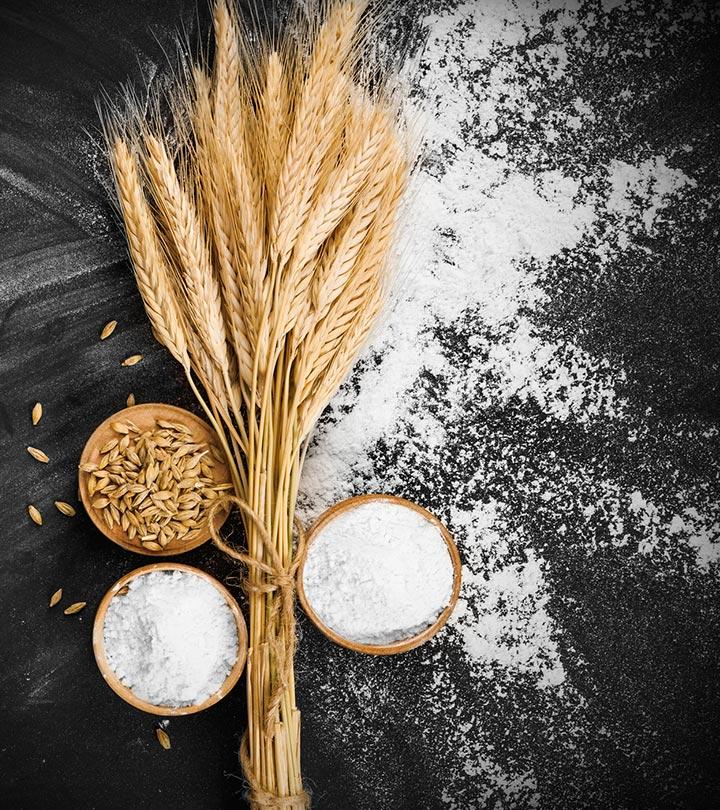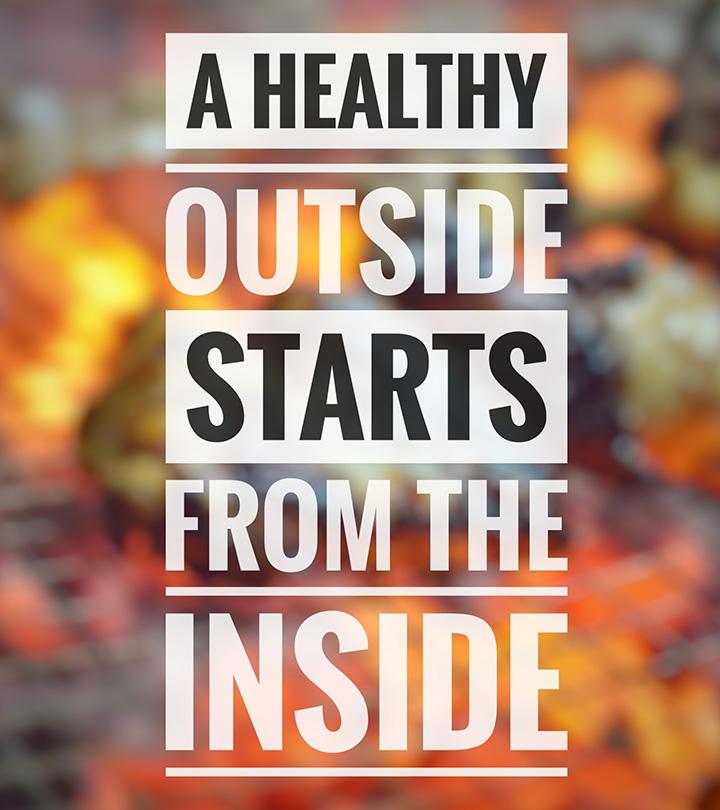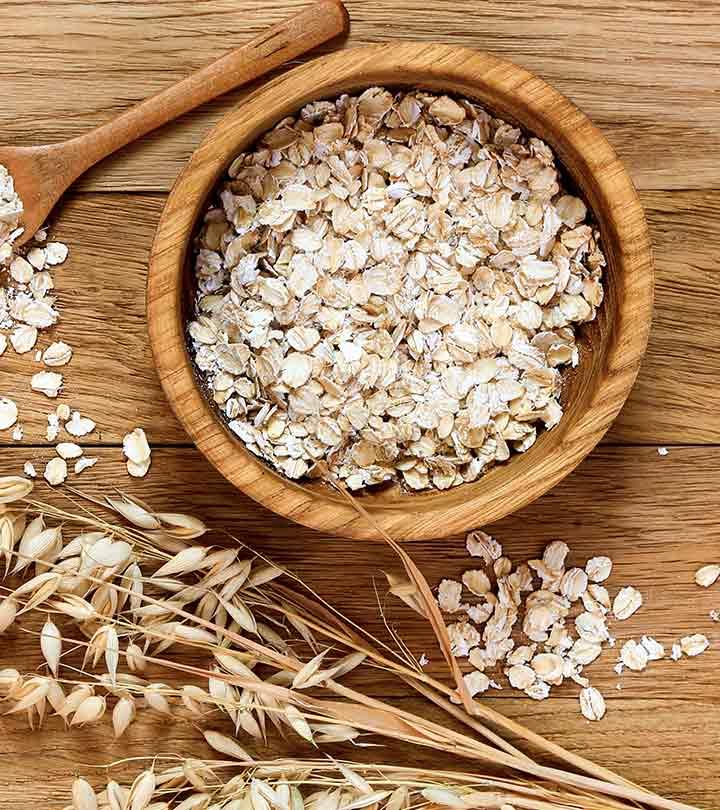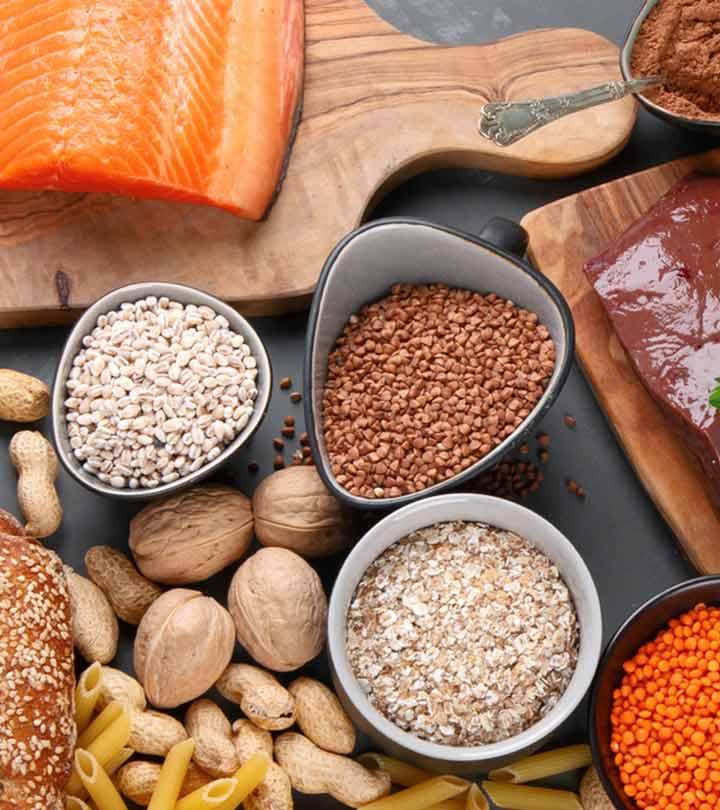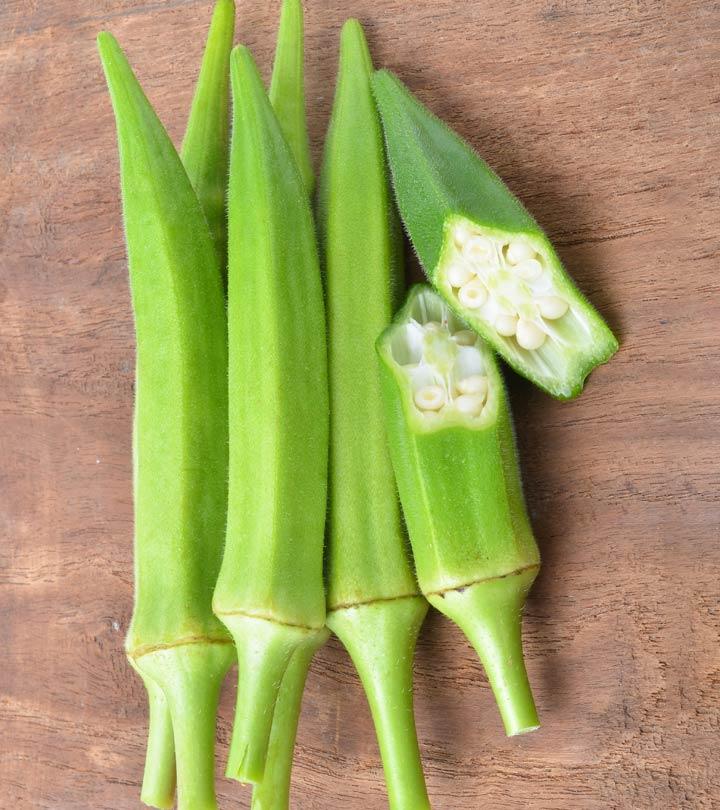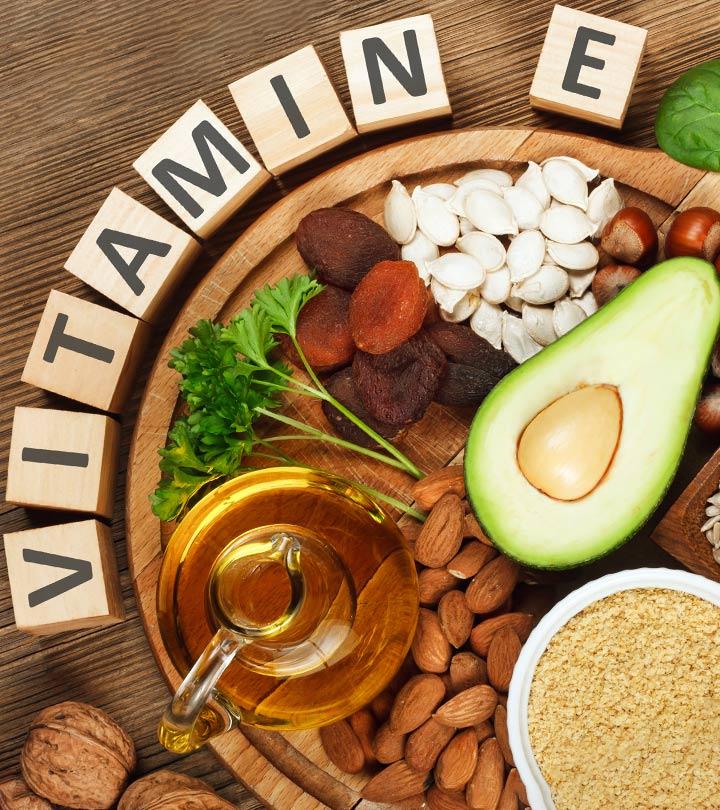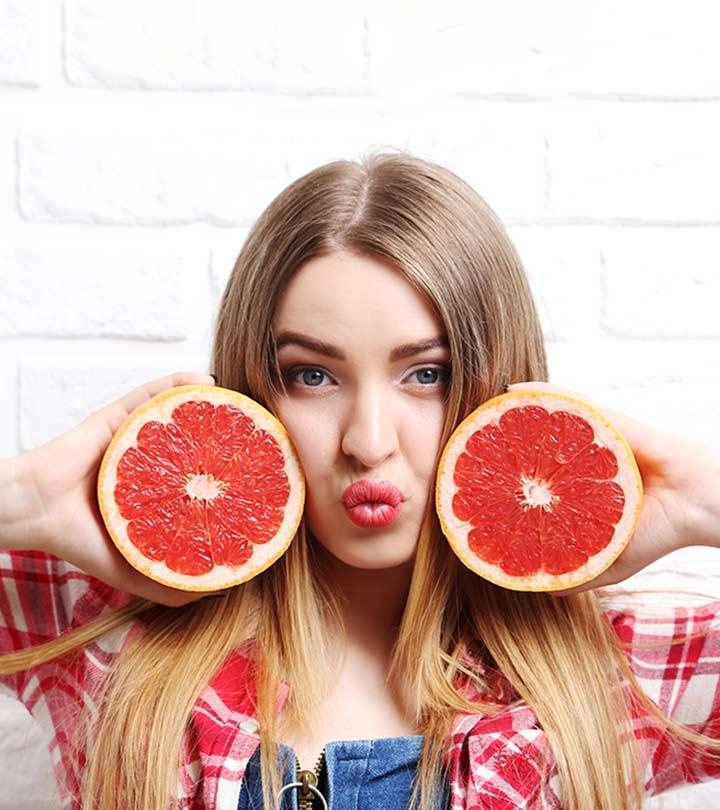27 Foods That Boost Your Hemoglobin Levels
Boosting your blood cell count boils down to getting these foods into your plate.
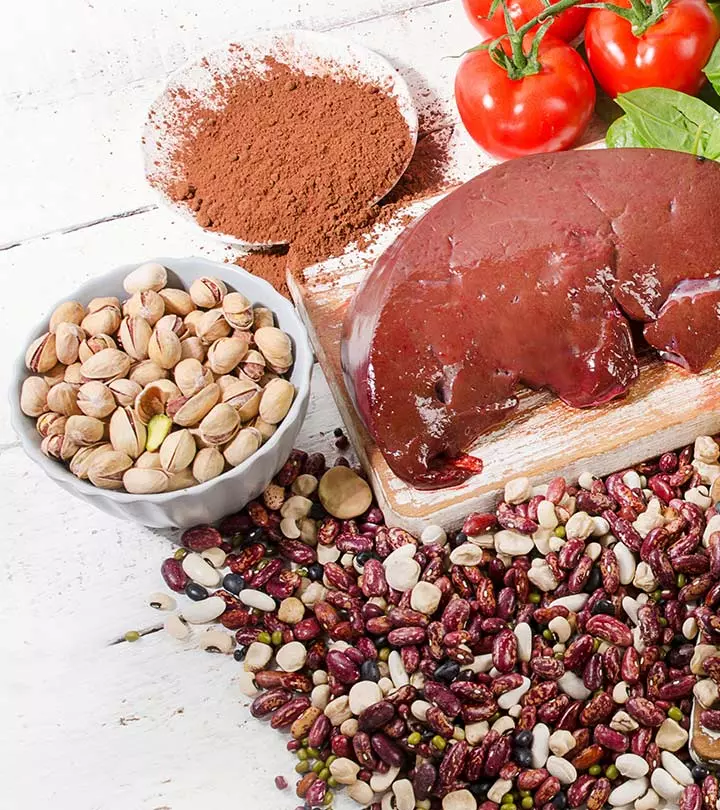
Image: ShutterStock
Hemoglobin plays a vital role in our bodily functions. But have you ever thought of including hemoglobin-rich foods to boost or to maintain your hemoglobin levels? Including these foods not only increases hemoglobin levels but also benefits you in multiple ways.
Want to know which foods are rich in hemoglobin? Scroll down to know about hemoglobin foods and learn why hemoglobin is vital to your body!
In This Article
Hemoglobin – A Brief
The production of hemoglobin is vital for your body, and iron, copper, and vitamins B12, B9 (folate), and C play an important role. It is necessary to have a proper diet to maintain an optimum level of hemoglobin. For that to happen, you need to boost your intake of foods that help in the synthesis of hemoglobin.
But, why is hemoglobin important?
Hemoglobin is a protein that is found in the red blood cells. Its most important function is to transport oxygen from the lungs to all the other cells, which helps sustain them.
A low hemoglobin level results in anemia, and it is influenced by many factors. Poor eating habits, poor absorption of the nutrients necessary for the production of hemoglobin, an increase in the required dosage due to pregnancy, blood loss, and even certain medications – they can all result in low levels of hemoglobin (1).
A study conducted in Portugal from 2013 to 2017 tried to determine the prevalence of anemia and iron deficiency in adults. The survey was conducted on 11,030 individuals out of which 26% were men, 64% were non-pregnant women, and 10% were pregnant women. Out of these, 51.8% of non-pregnant women, 38.2% of pregnant women, and 33.3% of men were anemic.
The most common symptoms of a low hemoglobin count are fatigue, shortness of breath, dizziness, headaches, and chest pain. It can lead to serious consequences and affect your cardiovascular system as well (1).
Preethi Kasireddy, a blogger, shares her experience about dealing with anemia on her personal blog: “I can still distinctly remember what living with anemia feels like, as I lived that way for over a decade. I was constantly fatigued and cold. Sometimes, I would even have shortness of breath. Every day felt like an uphill battle, every struggle way harder than it needed to be. Eventually, I grew so used to being tired and cold all the time that it became my baseline. I forgot what life before anemia felt like (i).”
 Fun Fact
Fun FactThat was all you needed to know about hemoglobin. Now if you are wondering what to eat to increase hemoglobin, take a look at the major foods that can help boost your hemoglobin levels. Check them out!
27 Hemoglobin Rich Foods
I. Meat
It is a well-known fact that meat, particularly red meat, is a hemoglobin food since it is an excellent source of iron.
Blanca Garcia, RDN, says, “Among the dietary sources of iron, meat boosts your iron levels the most. This is because iron from meat, fish, and poultry is more easily absorbed by the body than its plant-based counterparts. For reference, organ meats, such as liver, have the highest iron content at 8-10mg/100g portion – that’s more than the RDA for men.” Here are the different types of meat that can help increase your hemoglobin levels:
1. Liver
The highest concentration of iron, vitamin B12, and folate can be found in the liver. Lamb’s liver boasts of the highest amount of vitamin B12, with 100 g containing 85.7 mcg. It is also a significant source of folate, iron, and vitamin C, having 400 mcg, 10.2 mg, and 13 mg of each respectively.
Other good sources are liver from beef, turkey, and chicken.
 Quick Tip
Quick Tip2. Ground Beef
Ground beef (without fat) is a good source of iron. Every 85 grams (3 oz) of ground beef provides 2.1 mg of iron.
3. Chicken Breast
Chicken breast is also a good source of iron.
You can obtain around 0.7 milligrams of iron from every 100 grams (3.5 oz) of chicken breast.
Preethi Kasireddy, who was first diagnosed with “iron-deficiency anemia” when she was in college, mentioned that she noticed the difference only after adding meat to her diet and said, “It wasn’t until I switched to eating more meat (especially red meat) almost every day that I realized that my diet was the main culprit. Since making the change, my anemia has completely disappeared and I have not had to take a single iron supplement in over 11 months.” She further added, “Now that I eat primarily fish and meat (which contains heme iron), a lot more iron is absorbed into my blood.”
II. Seafood
Seafood, such as clams, oysters, and caviar, can provide more than your daily requirement of iron and vitamin B12.
4. Clams
Clams are the richest natural source of iron with 100 grams of clams containing 28 mg of iron, 22.1 mg of vitamin C, and 98.9 mcg of vitamin B12.
III. Legumes
If you are a vegan or a vegetarian, it is necessary you include iron-rich foods in your diet. Legumes, as well as their derivative products, can be good sources. Soybeans, kidney beans, lentils, and chickpeas are some recommended legumes.
5. Soybeans
Every 100 grams of soybeans contain 15.7 mg of iron, 375 mcg of folate, 6 mg of vitamin C. Soybeans are made into unfermented and fermented food types for consumption. The unfermented types include sprouts, soymilk, tofu, and so on. Fermented types include soy sauce, natto, miso, tempeh, etc.
IV. Starches And Grains
Starches such as rice bran, wheat bran, and oat bran are excellent sources of iron. But they do not contain vitamin C or B12, and are not a significant source of folate.
Caution: Those diagnosed with celiac disease should avoid gluten-containing foods (2).
6. Brown Rice
Brown rice is also an excellent choice as it is a good source of iron, and 100 grams of brown rice contains around 0.4 milligrams of iron.
7. Whole Grains
Whole grains, such as barley, quinoa, and oatmeal, are also rich in iron. Every 100 grams of any whole grain contains around 2.5 milligrams of iron. You can also take them in the form of whole grain fortified cereals for breakfast.
V. Fruits
Vitamin C is essential for the absorption of iron, which boosts your hemoglobin levels. Fruits such as oranges, lemons, guavas, and litchis are recommended because of their high vitamin C content.
8. Dried Fruits
Dried apricots, raisins, and dates are reliable sources of iron. In fact, 100 grams of dry fruits have 0.8 milligrams of iron. Apart from iron, these dry fruits also contain essential fibers and vitamins. Garcia adds, “Among the various fruits, dates have the highest iron content. One serving of dates and three servings of strawberries contain the same amount of iron. You can also consume dried apricots and prunes because the iron content for dried fruit preparations is more concentrated.”
9. Strawberries
These awesome berries are beneficial for those with low hemoglobin levels in two ways – by providing iron, and by increasing the iron absorption in the body.
10. Prunes
Having prune juice is also an effective way to increase the hemoglobin levels. This fruit is rich in iron, fiber, and vitamin C that assist in the production of RBCs (red blood cells).
11. Apples
Apples are rich in iron (and multiple other nutrients), which makes them suitable for boosting the hemoglobin levels. So, have an apple today!
12. Pomegranate
Pomegranate is rich in iron, calcium, protein, carbohydrates, fiber, and several other vitamins and minerals. Hence, they are often recommended for people who have low hemoglobin levels.
13. Sun-dried Tomatoes
A hundred grams of sun-dried tomatoes contains up to 9.1 milligrams of iron, which makes them important for those suffering from low hemoglobin count.
14. Persimmons
These orange fruits are a reliable source of iron, vitamin C, antioxidants, and several other nutrients.
15. Mulberries
Apart from being a healthy and tasty food alternative for people with diabetes, mulberries are also good for those with low hemoglobin levels. As a matter of fact, 100 grams of this exotic fruit contain about 1.8 milligrams of iron.
16. Currants
Blackcurrants are also a good way to increase the RBC count. They are known to contain around 1 to 3 milligrams of iron per 100 grams, depending on the type.
17. Watermelon
This refreshing and water-based fruit also makes its way to the list of the top foods to increase the hemoglobin levels. This is due to the high levels of iron present in it. It is also rich in vitamin C, which makes the iron absorption process better and faster.
VI. Vegetables
While it is easy to find vegetables that are rich in iron, they fall short as sources of folate and have no vitamin B12.
18. Seaweed
To boost your hemoglobin levels, you must turn to seaweed, 100 g of which contains 28.5 mg of iron and 93 mcg of folate.
19. Beetroot
Beetroot is often recommended to boost your hemoglobin because of its high folate content. It is also a good source of vitamin C and iron. Alongside the root, the beet greens are also equally nutritious and beneficial for hemoglobin levels.
20. Potatoes
Potatoes are rich in iron and vitamin C, making them a hemoglobin-friendly food item.
21. Broccoli
This distant and tastier cousin of cauliflower contains around 2.7 milligrams of iron per 100 grams. Apart from this, broccoli also contains other essential nutrients, such as magnesium and vitamins A and C.
22. Spinach
Spinach is, by far, the best veggie option for those looking for a hemoglobin boost. In fact, 100 grams of this leafy goodness contains up to 4 milligrams of iron. Pair them in salads with other green vegetables, like kale, asparagus, artichokes, and collard greens, that are also known to be good for hemoglobin.
VII. Herbs
Herbs are one of the best options to elevate the hemoglobin levels. Although spices such as thyme, parsley, spearmint, and cumin seeds are rich in iron, the amount that is usually consumed is not significant enough to make much difference. But they do provide an added boost to your daily iron requirement.
23. Nettle Leaf
This herb can play a very important role in raising your hemoglobin levels. Nettle leaf is rich in iron, vitamins B and C, and several other vitamins that pave the way for an improved RBC count.
VIII. Other Options
24. Eggs
Eggs have been touted as the breakfast of champions for a reason. A single egg has approximately 6 grams of protein, 0.55 mcg of vitamin B12, 22 mcg of folate, and 0.59 mg of iron.
25. Pumpkin Seeds
Hands down, the best source of iron. You will be surprised to know that 100 grams of pumpkin or chia seeds contain about 15 milligrams of iron, i.e., a whopping 83 percent of the daily recommended value. And guess what? They also contain essential fatty acids that can make your skin glow. Talk about killing two birds with a single stone!
26. Dark Chocolate
Good news for all dark chocolate lovers! Having your favorite chocolate can help you boost your hemoglobin levels quite easily because every 100 grams of 80% dark chocolate can provide you with 17 milligrams of iron, meeting around 90 percent of your daily iron quota.
27. Nuts
Almonds, peanuts, cashew nuts, pine nuts, hazelnuts, walnuts – all these nuts are amazing sources of iron. They are tasty and will give you a good 3 milligrams of iron per 30 grams.
Bottom Line – Hemoglobin is more or less a molecule containing iron (3). So, it makes sense to include more iron in your diet to boost your hemoglobin levels.
But there are other nutrients at work as well, particularly vitamins C, B12, and B9 (4). Vitamin B12 and vitamin B9 are needed for the production of red blood cells. In fact, vitamin B9 is essential for the synthesis of heme, the part of hemoglobin that contains iron. Vitamin C increases the absorption of iron due to its reducing property, which is why it is important (5). It is necessary to have foods that are rich in all the components to boost the hemoglobin levels.
A Word Of Caution
Maintaining your hemoglobin levels is crucial to your health, and a deficiency can have adverse effects. So, it is necessary to include the required amounts of iron, folate, and vitamins C and B12 in your diet to stay healthy. Here are a few risk factors associated with hemoglobin:
- Do not attempt to diagnose or correct a low hemoglobin level without the supervision of a medical professional.
- Pregnant women should not consume high doses (more than 45 mg per day) of iron as high hemoglobin levels have been associated with risks to the fetus (6).
Prevention is always better than cure. However, your doctor may advise you to take iron supplements in the case of an emergency. Learn why in the following section.
Iron Supplements For Hemoglobin
Iron supplements are often recommended to boost hemoglobin levels in individuals with iron-deficiency anemia or those who are at risk of developing it. The most common supplement is ferrous sulfate.
Research shows taking at least 5,000 mg of oral elemental iron is beneficial (7). Assuming that just 10% (average) of the iron is absorbed from the supplements, a 5,000 mg-dose could offer 500 mg of iron. Moderate anemia with no complicating factors may warrant just one cycle of 5,000 mg of iron supplementation. However, those with severe anemia may need to have their doses calculated based on their hemoglobin levels. Also, ensure you consult with your doctor before taking iron supplements.
Infographic: Best Foods To Boost Your Hemoglobin Levels
Increase your hemoglobin levels naturally by making a few important dietary changes. You need to have the best ingredients to boost your health, no matter what your diet or lifestyle choices are. If you want to improve your hemoglobin levels you need to stock up on iron content when you eat.
Check out the infographic below to learn more about the foods to increase hemoglobin. Next time you shop for groceries, don’t forget to include these foods in your list! Illustration: StyleCraze Design Team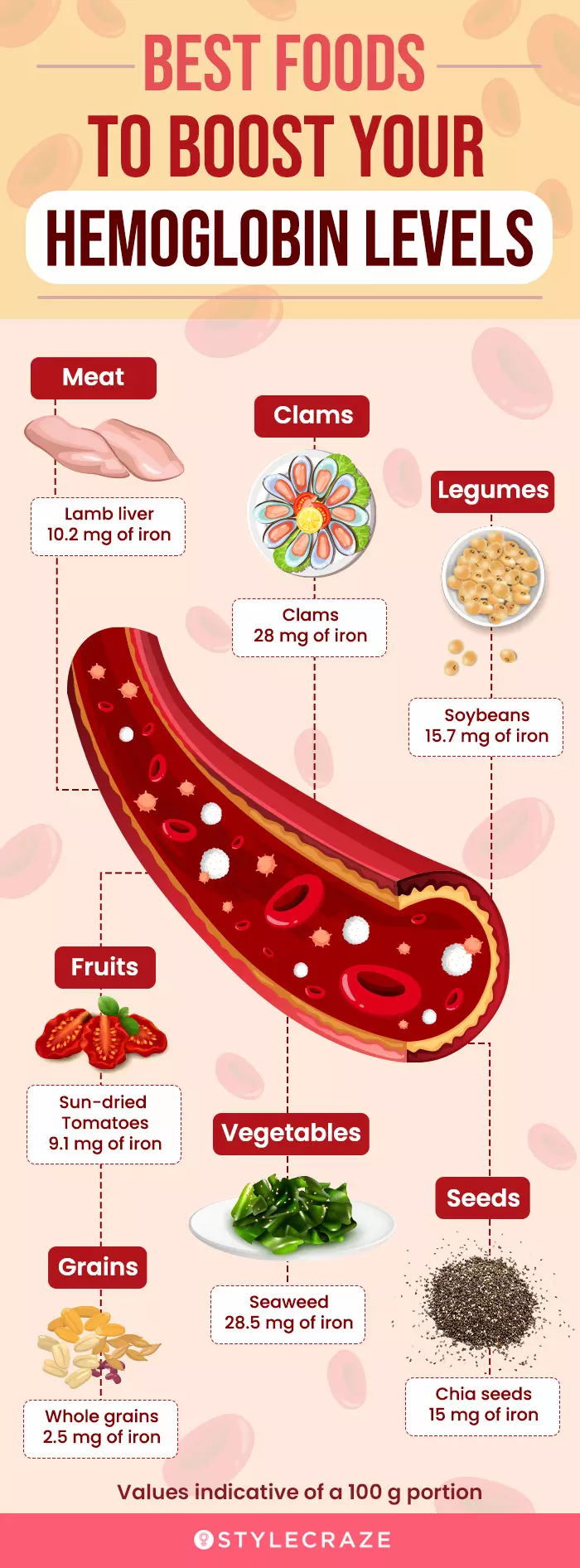
Hemoglobin, the protein in red blood cells that help transfer oxygen from the lungs to each cell of our body, is of prime importance to the smooth functioning of all our metabolism, organs, overall health, and immunity. Low levels of hemoglobin due to high requirements during pregnancy or a lack of proper diet and nutrition may lead to anemia and other complications. Now that you know how to increase hemoglobin, remember to include hemoglobin-rich foods like meat, seafood, starch, grains, and legumes in your diet that can help maintain the right levels of this vital protein in your body.
Frequently Asked Questions
Does milk increase hemoglobin?
Garcia says, “Dairy products, such as milk, cheese, and yogurt, although rich in calcium, have negligible iron content. Therefore, they cannot raise your hemoglobin levels. However, soy milk is a good alternative; 2 cups contain about 3 mg of iron.”
Can bananas raise your hemoglobin?
According to Garcia, “As bananas contain little iron, they will not significantly increase your hemoglobin levels. However, cooked bananas (boiling, frying) have a 25% higher iron content than raw bananas.”
Does drinking water increase hemoglobin?
Yes, drinking water helps increase hemoglobin index and reduce the risk of anemia.
How can I check my hemoglobin levels at home?
Hemoglobin levels can be checked at home with anemia meters. It is recommended to use FDA-approved anemia meters to get accurate results. You do not need any special preparations to take the test. However, do not self-medicate if you have low hemoglobin levels.
What causes low hemoglobin?
Inadequate iron-rich foods in the diet can cause low hemoglobin levels.
What is a healthy hemoglobin level by age?
• Newborn: 14- 24 g/ dL
• 0-2 weeks: 12-20 g/dL
• 2-6 months: 10-17 g/dL
• 6 months-1 year: 9.5-14 g/dL
• 1-6 years: 9.5-14 g/dL
• 6-18 years: 10-15.5 g/dL
• Adult men: 14-18 g/dL
• Adult women: 12-16 g/dL
• Pregnant women: >11 g/dL
Does sleep increase hemoglobin?
Yes, sleep increases hemoglobin levels. Many studies also have shown that inadequate sleep may increase the risk of low hemoglobin levels.
Key Takeaways
- Hemoglobin transports oxygen from the lungs to the cells and supports essential bodily functions.
- Poor absorption of hemoglobin may cause fatigue, dizziness, and chest pain.
- Foods rich in iron, folate, and vitamins C, B9, and B12 like meat and legumes help increase hemoglobin levels in your body.
- Pregnant women must not consume more than 45 mg of iron per day as high hemoglobin levels may harm the fetus.

Image: Stable Diffusion/StyleCraze Design Team
Learn how to increase your hemoglobin levels in just 7 days with an iron-rich drink. Watch this video for expert tips to manage anemia and feel healthier.
Personal Experience: Source
StyleCraze's articles are interwoven with authentic personal narratives that provide depth and resonance to our content. Below are the sources of the personal accounts referenced in this article.
i. My anemia disappeared after I started eating more meathttps://www.preethikasireddy.com/post/anemia-meat
References
Articles on StyleCraze are backed by verified information from peer-reviewed and academic research papers, reputed organizations, research institutions, and medical associations to ensure accuracy and relevance. Read our editorial policy to learn more.
- Anemia
https://www.ncbi.nlm.nih.gov/books/NBK499994/ - Efficacy of gluten-free diet alone on recovery from iron deficiency anemia in adult celiac patients
https://pubmed.ncbi.nlm.nih.gov/11197242/ - Hemoglobin: structure function and allostery
https://www.ncbi.nlm.nih.gov/pmc/articles/PMC7370311/ - Physiology blood Plasma
https://www.ncbi.nlm.nih.gov/books/NBK531504/ - The role of vitamin C in iron absorption
https://pubmed.ncbi.nlm.nih.gov/2507689/ - High maternal hemoglobin concentration in first trimester as risk factor for pregnancy induced hypertension
https://www.ncbi.nlm.nih.gov/pmc/articles/PMC3766933/ - Individualized treatment for iron deficiency anemia in adults
https://www.ncbi.nlm.nih.gov/pmc/articles/PMC2582401/
Read full bio of Dr. Timothy M. Marshall
- Blanca Garcia, RDN, has 8 years of experience as a nutrition specialist. She graduated from California State University of Los Angeles in 2011 and interned at the University of Puerto Rico Medical Science Campus in 2012. She services clients in both English and Spanish.
 Blanca Garcia, RDN, has 8 years of experience as a nutrition specialist. She graduated from California State University of Los Angeles in 2011 and interned at the University of Puerto Rico Medical Science Campus in 2012. She services clients in both English and Spanish.
Blanca Garcia, RDN, has 8 years of experience as a nutrition specialist. She graduated from California State University of Los Angeles in 2011 and interned at the University of Puerto Rico Medical Science Campus in 2012. She services clients in both English and Spanish.
Read full bio of Arshiya Syeda
Read full bio of Moksha Gandhi





